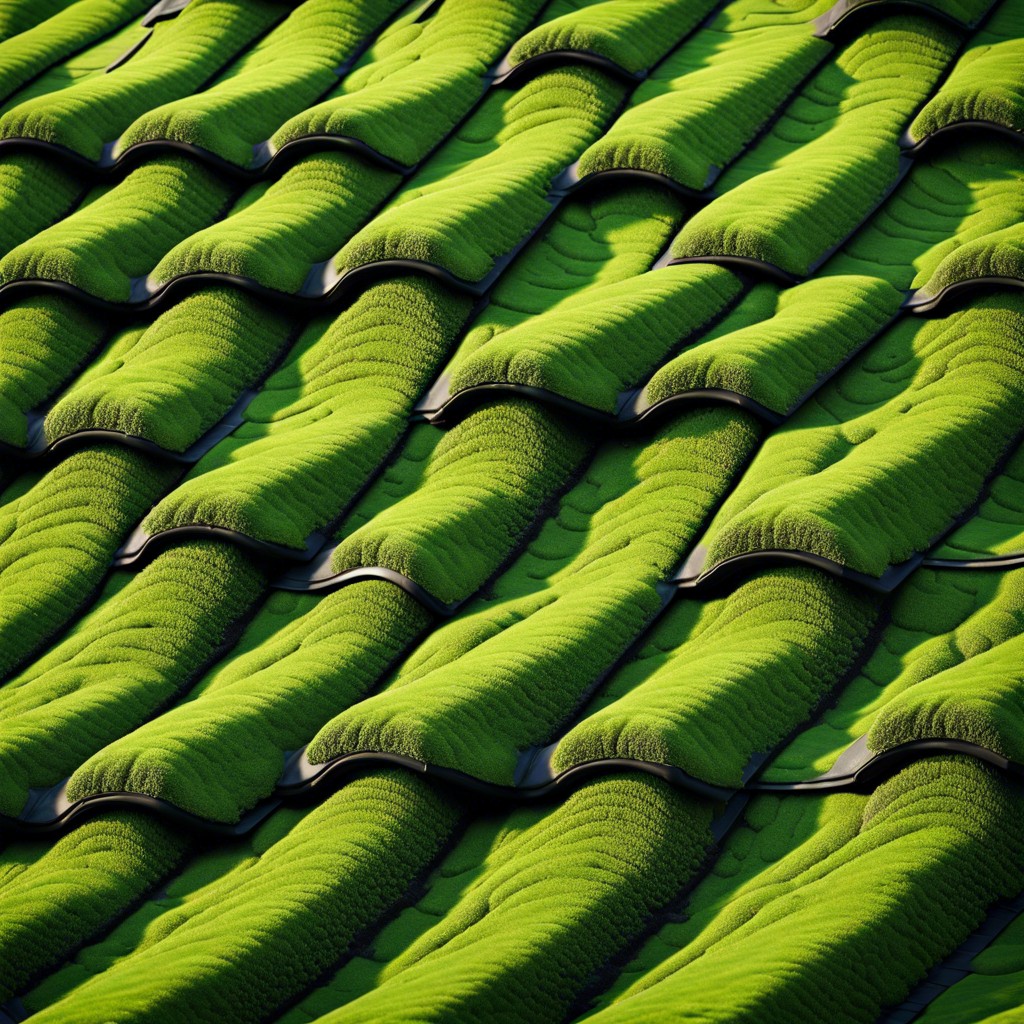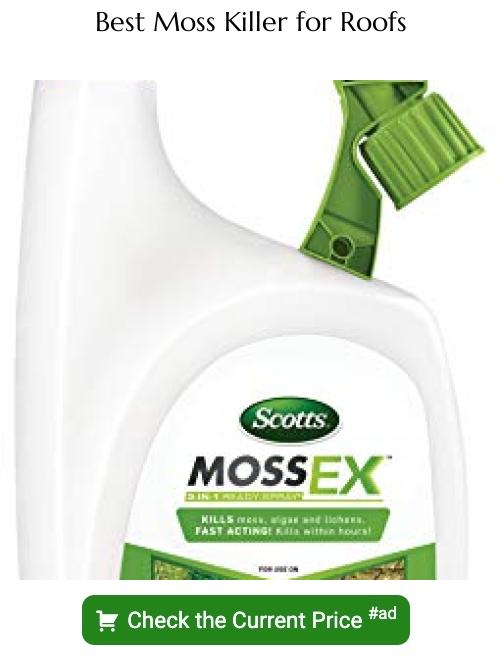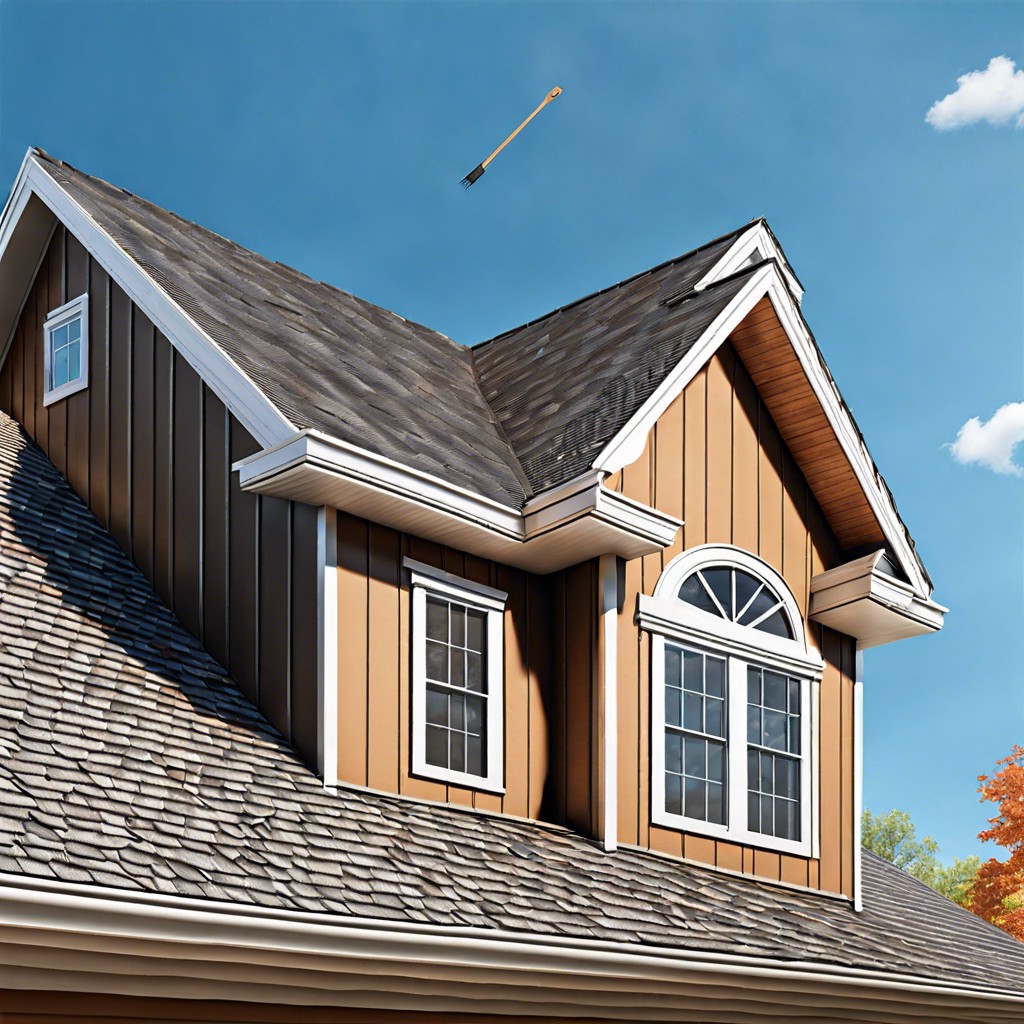Last updated on
Exploring the problems moss presents to roofing structures, this guide details reliable methods to identify, remove, and inhibit further moss propagation on your roof.
Key takeaways:
- Moss appears as a green or greenish-brown velvety layer on roofs.
- Moss can cause shingles to rot, lift, and deteriorate.
- To remove moss, brush it off and apply a moss-killing solution.
- Prevent future moss growth by trimming branches and installing zinc or copper strips.
- Regularly clean roofs, improve ventilation, and use moss-resistant treatments.
Identifying Moss On Your Roof

Moss typically appears as a green or greenish-brown velvety layer coating the roof’s exterior. It thrives in moist, shaded areas and often clings to north-facing or tree-covered sections of the roof where sunlight is limited.
Over time, it can form a thick mat that may be visible from the ground. Moss holds moisture against the surface, which can be detrimental to certain roofing materials, such as asphalt shingles or wood shakes.
When inspecting for moss, also check for underlying damage such as lifted, curled, or missing shingles which can be exacerbated by the moss’s presence.
Why Is Moss Bad for Shingles?
Moss acts like a sponge, retaining moisture that can cause shingles to rot and deteriorate over time. This moisture accumulation can also lift shingles, creating gaps where water can enter and potentially lead to leaks and structural damage.
Furthermore, the root-like structures of moss can work their way into and under shingles, compromising the integrity of the roof. Additionally, moss growth can block water runoff, which increases the risk of ice dams forming in colder climates.
The presence of moss may void roofing material warranties and decrease curb appeal, potentially affecting property value. Regular inspection and maintenance are crucial to mitigate these risks and ensure the longevity of your roof.
Step-by-Step Guide to Removing Moss
Begin by gently brushing off loose moss using a soft bristle brush, starting from the top downward to avoid lifting shingles.
Apply a moss-killing product; options include a solution of 50 percent bleach and 50 percent water or commercially available moss removal products. Follow the manufacturer’s instructions for the best results.
Allow the solution to sit on the affected areas as per the recommended time to kill the moss thoroughly without damaging the roofing materials.
Rinse the roof with plain water using a low-pressure garden hose to prevent damage to the shingles. High-pressure washers are not recommended as they can remove granules from the shingle surfaces.
Trim overhanging branches to reduce shade on the roof and improve sunlight exposure, which helps prevent moss regrowth.
Consider installing zinc or copper strips near the roof peak. When it rains, metal molecules will wash down the roof, creating an environment inhibitive to moss growth.
Regularly remove leaves and debris from the roof and gutters to improve air circulation and reduce moisture, both of which are conducive to moss prevention.
Preventing Future Moss Growth
To thwart the return of moss, consider these effective strategies:
- Trim overhanging branches to increase sunlight and improve air circulation, creating a less hospitable environment for moss.
- Ensure proper attic insulation and ventilation to prevent heat loss, which can lead to moss-friendly conditions on the roof.
- Install zinc or copper strips along the roof ridge; as rainwater washes over these metals, they release ions that impede moss growth.
- Regularly clear debris from the roof and gutters to prevent moisture retention.
- Apply moss-resistant roof treatments as a preventative measure after cleaning and during routine maintenance.
FAQ
Should I worry about moss on my roof?
Yes, you should worry about moss on your roof as it can cause aesthetic distraction, structural damage, and blockage in your home’s drainage system.
How do I get rid of moss on my roof?
To get rid of moss on your roof, utilize a garden hose with a spray attachment, aiming water downward along the roof’s angle to dislodge the moss, resisting spraying against the grain to avoid lifting shingles or lodging moss underneath them.
What does moss on a roof indicate?
Moss on a roof indicates prolonged exposure to moisture and debris, which can significantly shorten the lifespan of roof shingles.
What time of year should you remove moss from roof?
The best time to remove moss from your roof is right before peak fall rains, ensuring the moss is damp and there is no forecasted precipitation for a few days.
Can moss damage the structural integrity of my roof?
Yes, moss can damage the structural integrity of your roof by holding moisture against the roofing material, causing erosion and decay over time.
What are the preventive measures to avoid moss growth on roofs?
To prevent moss growth on roofs, homeowners should regularly clean their rooftops, trim overhanging branches, improve roof lighting by removing shades, ensure proper drainage, and use moss-killing chemical treatments.
Does the type of roofing material affect the growth of moss?
Yes, the type of roofing material can significantly impact the growth of moss.





